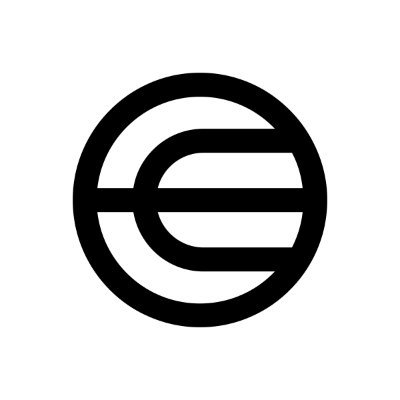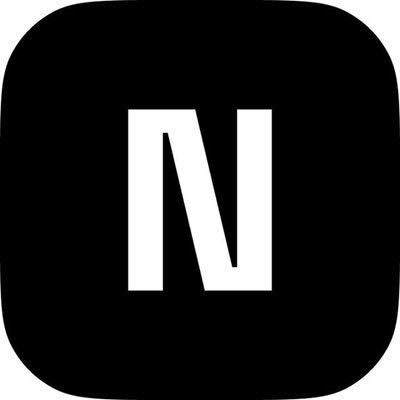Other identity verification systems you need to know besides Worldcoin
Original Author: Biteye Core Contributor Crush
Original Editor: Biteye Core Contributor Crush
Original Source: @BiteyeCN
As the airdrop army grows stronger, project teams are becoming increasingly cautious about distributing airdrops, as seen with the popular project Worldcoin in recent days.
Despite major exchanges like OKX and Binance announcing the launch of its token $WLD, Worldcoin, a project aiming to distribute airdrops to all of humanity, faces a heavier burden in preventing witch attacks, leading to much controversy surrounding its iris verification.
Additionally, the recently concluded Linea testnet event also introduced identity verification to combat witch attacks. Users who completed identity verification could earn an extra 2500 points.
The current attitude of project teams towards witches is becoming clearer; proper account verification has become a necessary course for every project participant. Today’s article will introduce several popular identity verification and witch prevention projects.
01 World ID
Introduction
Worldcoin is a cryptocurrency project founded by OpenAI's co-founder Sam Altman in 2020, aiming to leverage blockchain technology to establish a global financial equity and inclusive open-source protocol.
With the explosive popularity of ChatGPT, this 2020 project has gradually gained recognition. In fact, in June of the same year, Worldcoin raised $25 million at a valuation of $1 billion, with a prestigious lineup of investors including Digital Currency Group, Coinbase Ventures, a16z, Multicoin Capital, and LinkedIn founder Reid Hoffman, as well as FTX founder Sam Bankman-Fried.
By the end of March 2021, Worldcoin raised another $100 million at a valuation of $3 billion.
Currently, there are still many people around the world without legal identity, and what Worldcoin aims to do is provide these individuals with a unique digital identity.
The goal is to create a digital economy that anyone can participate in and ultimately benefit from this decentralized collective ownership.
To achieve this goal, it is essential to have a sufficient number of users for its token, making airdrop distribution an indispensable operation.
As mentioned at the beginning of the article, Worldcoin's large-scale airdrop faces a heavier burden in preventing witch attacks, leading them to implement hardcore verification by directly confirming real identities through users' iris information.
Worldcoin consists of three parts: the token, World ID (DID), and World APP (wallet). Users utilize World ID to verify their unique identity, preventing witch attacks, and use World APP to receive $WLD airdrops.
Currently, there are many methods for real identity verification, such as facial recognition, fingerprints, and genetics. Worldcoin adopts iris verification, valuing its uniqueness and fraud prevention; in simple terms, the difficulty of forging an iris is higher.
The promotion and operation of World ID are also relatively simple. Worldcoin has launched an iris scanner called Orb, and they recruit local agents in various countries. After assessment and training, these agents are given Orbs to complete iris collection tasks.
The more irises agents collect, the more rewards they receive. Additionally, each time they collect a user's iris, they provide some small gifts and token rewards, making the overall effect of their grassroots promotion quite good.
Due to the hardcore nature of its identity verification, it cannot be completed without an Orb. Moreover, collecting users' biometric information is highly sensitive; many countries' laws prohibit institutions from privately collecting users' biometric information and taking it out of the country.
Thus, the biggest obstacles to its iris verification currently are the number of Orbs and compliance restrictions from sovereign nations.
Worldcoin plans to increase the number of Orbs to 1500 this summer and fall while expanding World ID to more countries and regions, such as the United States, Mexico, Hong Kong, Japan, Singapore, and more.
Projects using World ID:
Operation
Since World ID verification requires the use of Orb to collect irises, if your country or region is not supported by Worldcoin, you still cannot obtain World ID. Therefore, this section will only discuss the operable parts and the basic principles of verification.
First, users need to download their wallet, World APP, which is now available in major app stores.
After installing the wallet, you will be prompted to choose whether to create a new wallet or import an existing one. When creating a new wallet, you will also be asked to verify your phone number, although you can choose to skip this and verify later.
If you choose to verify immediately, you will need to turn off your VPN, and upon completion, you will receive 25 $WLD tokens.
The basic principle of verification is that when creating a new wallet, a key pair is generated, including a private key and a public key. The user provides the public key to the iris scanner Orb for detection, and Orb calculates a unique identifier called IrisHash based on the collected iris image.
When this IrisHash does not exist in the database, it indicates that the user is registering for the first time. Only through this verification can the user successfully register a new World ID.
02 Gitcoin Passport
Introduction
Gitcoin Passport is probably the most well-known identity verification system. Gitcoin is an open-source donation project based on Ethereum, primarily aimed at helping open-source projects raise funds and build a communication bridge between projects and users.
Founded in 2017 by American engineer and entrepreneur Kevin Owocki, Gitcoin raised $11.3 million from Paradigm in April 2021 and later secured $500,000 from the Ethereum Foundation in November of the same year.
As a donation platform, Gitcoin has raised early funding for many excellent projects, which in turn have distributed airdrops to donating users, such as GTC, ENS, BrightID, and more.
Due to the ease of obtaining project airdrops through donations, a large number of users began donating solely for airdrops, leading to the emergence of Gitcoin Passport.
Gitcoin Passport is a Web3 identity verification aggregator designed to prevent witch attacks by collecting verifiable credentials to prove user identity and trustworthiness while protecting user privacy.
Within Gitcoin's quadratic funding mechanism, there is a concept of matching donations. When users make donations, Gitcoin's funding pool will also match a portion of funds to the project based on the number of donors.
Only users with a Gitcoin Passport score exceeding 21.76 can qualify for matching donations.
As Gitcoin's influence grows, its Passport is gradually being accepted by other project teams, such as the aforementioned new public chain Linea.
In the future, some project operations will likely require Gitcoin Passport scores as a threshold. As users, it is also necessary for us to complete relevant verification tasks.
Projects using Gitcoin Passport:
Operation
https://passport.gitcoin.co
The overall operation of Gitcoin Passport is relatively simple; you can clearly see all tasks on their official website.
After completing each task, corresponding points will be awarded, such as linking Google accounts, Facebook accounts, and Discord accounts.
Based on the completion of these tasks, Gitcoin provides an overall score for the user's authenticity; the higher the score, the more trustworthy your wallet address is considered.
If other projects adopt Gitcoin Passport scores, then when you interact with those projects, a higher score will reduce the likelihood of being considered a witch.
For specific points corresponding to each task and strategies to obtain over 20 points at the lowest cost, you can refer to the mind map and guide previously released by Biteye.
“A Guide to Quickly Saving Money and Increasing Gitcoin Passport Scores”
“Latest Verification Guide for Gitcoin Passport”
03 Nomis
Introduction
Nomis is a recently popular on-chain reputation project launched by the Web3 credential data network Galxe, aiming to establish an open on-chain data reputation system using the transparency of blockchain.
In airdrop activities, witch users often profit through various means, causing significant trouble for project teams and community members.
Although blockchain has its own transparency, allowing visibility of these witch users transferring the same amount of tokens between multiple wallets, without suitable tools, this information is useless.
Nomis serves as such a tool, using a custom wallet scoring model to assess addresses' eligibility for airdrops. This scoring is based on over 30 parameters, considering various types of wallet activities.
Through this model, project teams can customize parameters and weights to calculate user scores, and once a user's score falls below a specific level, they can be clearly marked as a witch.
Nomis believes that even if the wallet owner is not a witch, using tools like Nomis can significantly reduce the workload of manual reviews.
Similarly, although it cannot change the mindset of witch users, it can at least invalidate their operations, which is what Nomis aims to do.
The project's rise in popularity is related to the currently trending layer 2 public chain zkSync. Just as everyone is interacting with zkSync, the official zkSync suddenly retweeted Nomis's post, causing widespread concern, and many began to worry that zkSync would also start cracking down on witch accounts.
Nomis's official team also released related articles, stating that they are the first identity protocol deployed on zkSync, which is significant for them.
However, rather than worrying about project teams starting to catch witches, it is wiser to prepare in advance and improve scores.
Projects using Nomis:
https://nomis.cc/multichain
By opening the official website, you can see the multi-chain comprehensive score of your bound wallet on the left. Users with scores over 40 can mint the Score SBT on the right, which requires payment. In other words, 40 points may be a passing score.
If you want to improve your score here, you can check the components of the score in the Stats section below the score.
Based on the descriptions on the right, we can summarize the following points for improving scores:
Increase wallet funds
Increase transaction volume
Increase transaction frequency
Increase the number of NFTs in the wallet
Increase the total value of NFTs
https://mirror.xyz/0xnomis.eth/nevvBn04A0OmInI2ssirP4iMCwbE0jNZcV8znQ9go
In addition to some operations of the project itself, the article mentioned above published on Mirror when launching on zkSync can also be minted as a commemorative moment. Optimism's transaction fees are very low, around 0.1 U, and only 28 people have minted it so far.
04 Degenscore
Introduction
Degenscore is a decentralized identity system based on on-chain behavior. Unlike Nomis, which supports multiple chains, Degenscore's scores are entirely based on behavior on the Ethereum mainnet.
Users with scores over 700 can mint a Degenscore Beacon SBT, but reaching 700 points is not easy.
Although the difficulty is high, once you pass the Degenscore verification, the benefits are substantial.
Many projects collaborate with Degenscore to provide users with whitelist benefits, the most notable being the Lens whitelist, where at its peak, a Lens was valued at around 270 U.
Projects using Degenscore:
And more…
Degenscore has many collaborative projects, which can be viewed on its official website; the projects listed in the Cafe section basically all use Degenscore.
Operation
https://degenscore.com
When you open the Degenscore official website, you will see the Cafe interface. This includes three sections: Opportunities, Abilities, and Jobs, clearly informing users of the benefits of holding a Beacon.
Opportunities: Beacon holders can experience the beta features of these collaborative projects in advance.
Abilities: Beacon holders have special rights in collaborative projects.
Jobs: Beacon holders can gain priority job opportunities in recommended projects and companies.
Click on the Beacon in the top menu and select Overview to see the application interface. The minting process is simple; the only requirement is that the address must exceed 700 points.
Improving scores is straightforward; just find the Leaderboard under the Beacon in the top menu and interact with the projects that the top 100 high-scoring users have interacted with.
Since this is on the mainnet, users need to prepare more ETH for GAS fees.
05 Sismo
Introduction
Sismo is an on-chain reputation project based on zero-knowledge proofs, reportedly founded by former Aave employees, and completed a $10 million funding round in December 2021.
The investment lineup is quite strong, including Framework Ventures, Delphi Digital, Fabric Ventures, Global Coin Research, Seed Club Ventures, and more.
One of its main features is that users can prove ownership of certain assets without revealing their wallet addresses.
This is highly attractive for users who want to showcase their capabilities while fearing privacy breaches. For instance, Ethereum founder Vitalik has mentioned in his blog that he is very optimistic about identity ecosystems, specifically citing Sismo as an example.
(Vitalik's blog, https://vitalik.eth.limo/general/2022/12/05/excited.html)
So how does Sismo solve this problem? Many users in the crypto world actually have more than one wallet; for example, one wallet holds 100 ETH, and another holds 100 UNI. When I participate in a corresponding meeting, I need to present two asset proofs separately.
There are two issues here: one is that I need to disclose my two addresses, compromising privacy. The other is that I need to present two asset proofs, which is cumbersome.
In Sismo's official introduction, the concept of single sign-on is mentioned. This means that users only need to log in once, and they can bypass login verification elsewhere. For example, once you log in to your Google account, Gmail, YouTube, Google Translate, Google Docs, etc., will automatically log in without requiring users to repeatedly enter their account passwords.
Sismo's badges serve this purpose; users only need to undergo verification once to generate a badge, which can be sent to another new address without assets.
In this way, even if the new address does not have the asset, the badge can still prove your on-chain identity. Moreover, since the badges are all on one address, users do not need to use multiple wallets for multiple verifications.
Projects using Sismo:
Multi-chain DeFi Aggregator Rhinofi
Operation
The current operation of Sismo is to obtain badges. There are mainly two types of badges: one is the official badge, and the other is the third-party issued badge, such as the badge that G 15 donors can receive.
https://app.sismo.io/
By opening the link above, the first badge you will see is the G 15 badge. If you cannot find it, you can search for keywords in the search box on the left.
(Note from the author: the URL app.sismo.io may become invalid in the future; you can use apps.sismo.io as a substitute.)
Enter the badge detail page and claim it directly. If your wallet does not meet the requirements, you will be prompted to switch to another wallet.
Currently, many badge claims have time limits, and the number of available badges is relatively small. After the update, Sismo also provides the function to create badges.
Open the website below, click "Create a Data Group," and you can create your own badge. Although these self-created badges may not carry much weight, it can still be a way to experience the project.
https://factory.sismo.io/
06 Summary
The projects mentioned above are just a few of the more popular and noteworthy identity verification projects; there are many other similar projects:
Binance Account Bound (BAB): Identity verification for Binance wallet accounts, complete KYC to qualify, a threshold for Binance-related projects.
Galxe Passport: A passport launched by Galxe, complete KYC to qualify, a threshold for some projects on Galxe.
Debank: A multi-chain DeFi wallet that recently launched a badge feature and has its own WEB3 ID, but requires a payment of $96.
Summary of the five projects mentioned above:
1. World ID currently faces the most controversy. Although from the perspective of preventing witches, its iris verification can filter out the vast majority of witches, and due to the difficulty of verification, some genuine users have also been filtered out.
However, the collection of users' biometric information is a highly sensitive operation. Although Worldcoin claims it will not store users' iris images and will delete them once the algorithm is optimized, we do not know when this optimization will occur or whether there will be leaks during the collection process by local agents.
At the same time, constrained by the number of Orbs, the efficiency of this off-chain verification is far inferior to on-chain methods. Therefore, whether World ID is a reliable, effective, and secure identity verification tool remains to be validated.
2. The most widely used should be Gitcoin Passport. It employs a large number of tasks to verify user identities, including both on-chain and off-chain methods. Its evaluation of user identity is relatively comprehensive and reliable.
In the future, many project teams are likely to adopt its verification as a tool to filter witches. Users seeking airdrops should pay close attention and improve their scores on Gitcoin Passport.
3. The easiest and most cost-effective operation is Nomis. Users do not need to complete various tasks; simply engaging more on-chain, saving more money, and buying more NFTs can improve their overall scores.
Moreover, it also provides a multi-chain comprehensive score, allowing operations on layer 2 chains, which not only saves money but also offers a more diversified evaluation of users.
4. The most challenging and costly operation is likely Degenscore. Not only are there many tasks, but it also requires operations on the mainnet, meaning users may need to prepare a significant amount of fees to support interactions, resulting in high costs.
While the volume of funds can somewhat indicate the authenticity of an address, for a project, the premise of filtering out genuine users is authenticity, not solely based on the amount of funds.
Using Degenscore's score as a witch detection tool will lead to severe distortions in results. In the author's view, Degenscore resembles a wealthy club, or as its name suggests, a Degen (veteran, heavy user) club, so ordinary users need not be overly fixated on their scores.
5. Lastly, Sismo's use of zero-knowledge proofs and focus on privacy protection is its advantage. However, Sismo is still in a relatively early stage, with few collaborative projects, and its technical route is also changing, so there are not many things users can experience. For now, users can experience claiming badges or its badge creation feature and keep an eye on its new developments.

















